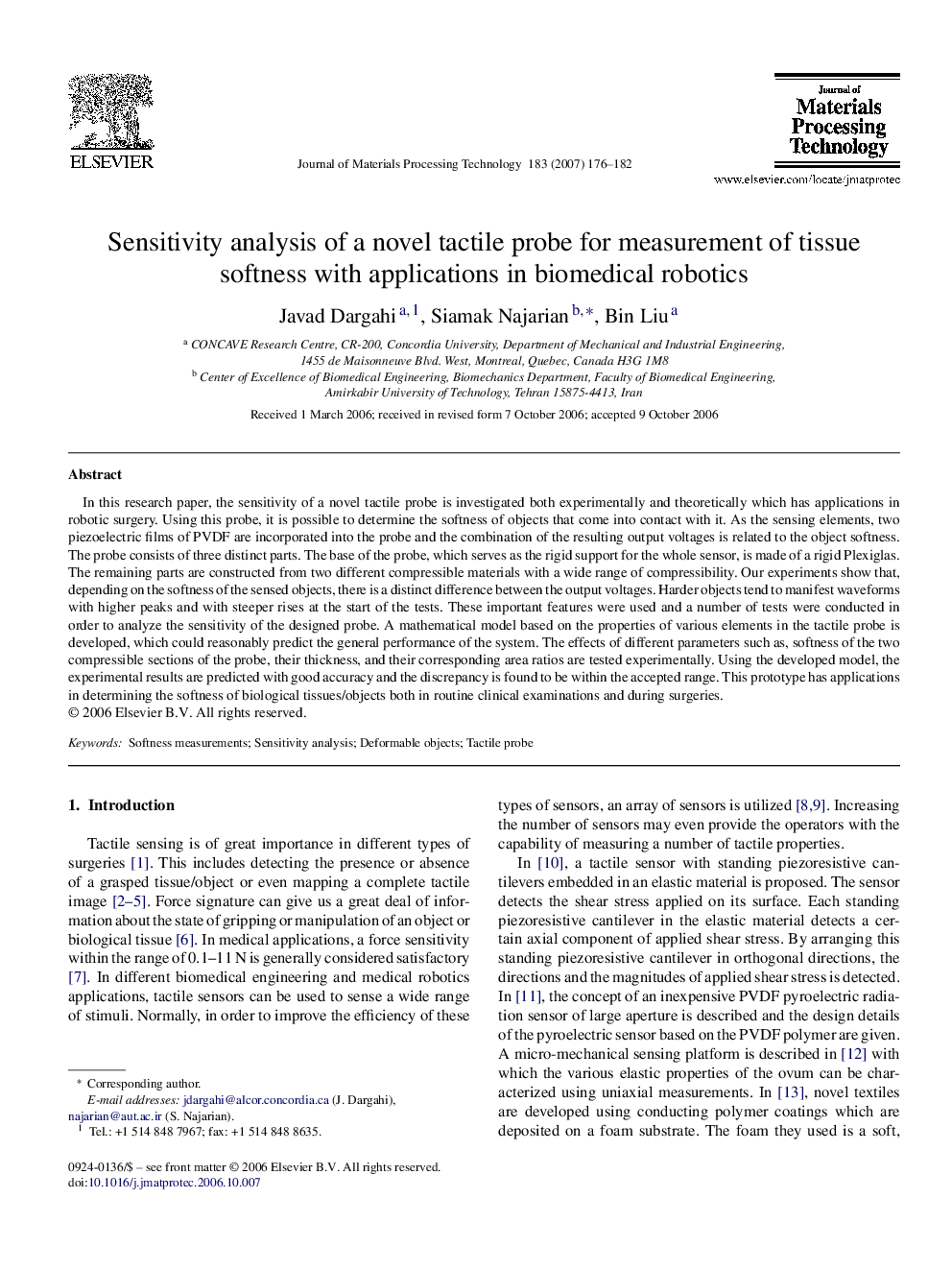| Article ID | Journal | Published Year | Pages | File Type |
|---|---|---|---|---|
| 796370 | Journal of Materials Processing Technology | 2007 | 7 Pages |
In this research paper, the sensitivity of a novel tactile probe is investigated both experimentally and theoretically which has applications in robotic surgery. Using this probe, it is possible to determine the softness of objects that come into contact with it. As the sensing elements, two piezoelectric films of PVDF are incorporated into the probe and the combination of the resulting output voltages is related to the object softness. The probe consists of three distinct parts. The base of the probe, which serves as the rigid support for the whole sensor, is made of a rigid Plexiglas. The remaining parts are constructed from two different compressible materials with a wide range of compressibility. Our experiments show that, depending on the softness of the sensed objects, there is a distinct difference between the output voltages. Harder objects tend to manifest waveforms with higher peaks and with steeper rises at the start of the tests. These important features were used and a number of tests were conducted in order to analyze the sensitivity of the designed probe. A mathematical model based on the properties of various elements in the tactile probe is developed, which could reasonably predict the general performance of the system. The effects of different parameters such as, softness of the two compressible sections of the probe, their thickness, and their corresponding area ratios are tested experimentally. Using the developed model, the experimental results are predicted with good accuracy and the discrepancy is found to be within the accepted range. This prototype has applications in determining the softness of biological tissues/objects both in routine clinical examinations and during surgeries.
